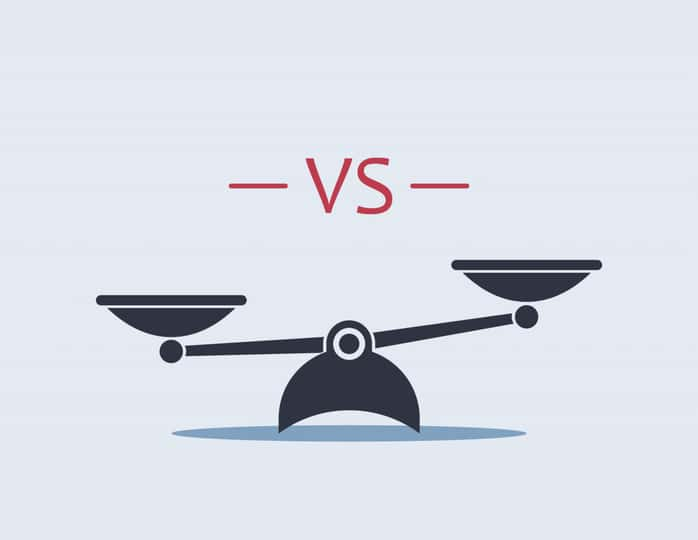The banking sector faces a complex landscape marked by challenges like hot money pursuit, persistent inflation, and evolving interest rate policies by the Federal Reserve. Banks are now prioritizing deposit growth and retention, focusing on quality over quantity to navigate these challenges effectively.
Despite these hurdles, the U.S. banking sector is anticipated to show resilience in the near future. However, concerns such as prolonged high interest rates, rising deposit costs, sluggish loan growth, and potential defaults on commercial real estate loans contribute to the clouded outlook for this year.
Looking ahead, anticipated rate cuts and inflation adjustments, U.S. banks may encounter additional hurdles if interest rates remain elevated. This scenario may make investments in bank stocks an attractive option. Furthermore, the global banking and financial services market is forecasted to expand significantly, with a projected 7.9% CAGR by 2030.
Therefore, let’s compare two bank stocks, Bank of America Corporation (BAC - Get Rating) and Citigroup Inc. (C - Get Rating), to understand why C is the better buy.
The Case for Bank of America Corporation Stock
Bank of America Corporation (BAC - Get Rating) provides banking and financial products and services for individual consumers, small and middle-market businesses, institutional investors, large corporations, and governments worldwide.
BAC’s stock has gained 36.6% over the past year to close the last trading session at $38.65.
BAC’s revenue grew at a CAGR of 4.9% over the past three years.
BAC has paid dividends for 29 consecutive years. its annualized dividend of $0.96 per share translates to a dividend yield of 2.44% on the current share price. Its four-year average yield is 2.47%. Over the past three and five years, BAC’s dividend payments have grown at CAGRs of 9.3% and 10.5%, respectively.
In terms of forward non-GAAP P/E, BAC’s 12.18x is 15.1% higher than the 10.58x industry average. Likewise, its 3.02x forward Price/Sales is 19.6% higher than the 2.53x industry average.
In terms of the trailing-12-month Return on Total Assets, BAC’s 0.76% is 28% higher than the 1.06% industry average. Similarly, its 9.03% trailing-12-month Return on Common Equity is 15% lower than the 10.62% industry average.
BAC’s total revenue for the fiscal first quarter that ended March 31, 2024, declined 1.7% year-over-year to $25.82 billion. For the same period, its net income applicable to common shareholders stood at $6.14 billion or $0.76 per share, down 19.8% and 19.1% over the prior-year quarter, respectively.
Street expects BAC’s EPS for the quarter ending June 30, 2024, to decrease 7.1% year-over-year to $0.82.
BAC’s POWR Ratings reflect its grim outlook. It has an overall rating of D, which translates to a Sell in our proprietary rating system. The POWR Ratings assess stocks by 118 different factors, each with its own weighting.
It is ranked #7 out of 9 stocks in the Money Center Banks industry. It has a D grade for Growth, Value, and Quality. Click here to see BAC’s ratings for Momentum, Stability, and Sentiment.
The Case for Citigroup Inc. Stock
Citigroup Inc. (C - Get Rating) provides various financial products and services to consumers, corporations, governments, and institutions in North America, Latin America, Asia, Europe, the Middle East, and Africa. It operates through three segments: Institutional Clients Group (ICG), Personal Banking and Wealth Management (PBWM), and Legacy Franchises.
C’s stock has declined marginally over the past month to close the last trading session at $61.67. However, the stock has gained 49.3% over the past nine months.
C’s Tang Book Value grew at a CAGR of 1.9% over the past three years.
C has paid dividends for 11 consecutive years. Its annualized dividend of $2.12 per share translates to a dividend yield of 3.39% on the current share price. Its four-year average yield is 3.83%. Over the past three and five years, the stock’s dividend payments have grown at CAGRs of 1.3% and 3.3%, respectively.
In terms of forward Price/Sales, C is trading at 1.48x, 41.6% lower than the industry average of 2.53x. Similarly, its forward Price/Book is trading at 0.61x, 42.2% lower than the 1.05x industry average.
C’s 9.41% trailing-12-month Capex / Sales is 396.1% higher than the 1.90% industry average. On the other hand, its trailing-12-month net income margin and Return on Common Equity of 11.48% and 3.50% are 50.3% and 67% lower than the industry average of 23.07% and 10.62%., respectively.
C’s total revenues for the first quarter ended March 31, 2024, decreased 1.5% year-over-year to $21.10 billion. C’s net income declined 26.8% year-over-year to $3.37 billion. Moreover, its EPS came in at $1.58, representing a decline of 27.9% year-over-year. On the other hand, its services net interest income rose 4.2% year-over-year to $2.72 billion.
Analysts expect C’s revenue for the quarter ending June 30, 2023, to increase 3.4% year-over-year to $20.09 billion. Its EPS for the quarter ending September 30, 2024. is expected to decline 2.1% year-over-year to $1.49. It surpassed the Street EPS estimates in three of the trailing four quarters.
C’s POWR Ratings are consistent with an uncertain outlook. It has an overall rating of C, which translates to Neutral in our proprietary rating system.
It has a C grade for Momentum, Stability, Sentiment, and Quality. Within the same industry, it is ranked first. In addition to what we stated above, we have also rated C for Growth and Value. Get all the C ratings here.
BAC vs. C: Which Bank Stock Offers a Higher Yield?
Despite challenges, banks are leveraging technology to grow through enhanced digital and mobile banking, AI-driven services, big data analytics, blockchain security, automation, cybersecurity, fintech partnerships, and open banking APIs.
However, not all stocks are poised for growth; investors could avoid BAC and consider C for its discounted valuation and higher dividends.
Our research shows that the odds of success increase when one invests in stocks with an Overall Rating of Strong Buy or Buy. View all the top-rated stocks in the Money Center Banks industry here.
What To Do Next?
43 year investment veteran, Steve Reitmeister, has just released his 2024 market outlook along with trading plan and top 11 picks for the year ahead.
Want More Great Investing Ideas?
BAC shares were trading at $38.70 per share on Wednesday afternoon, down $0.62 (-1.58%). Year-to-date, BAC has gained 15.75%, versus a 11.18% rise in the benchmark S&P 500 index during the same period.
About the Author: Abhishek Bhuyan

Abhishek embarked on his professional journey as a financial journalist due to his keen interest in discerning the fundamental factors that influence the future performance of financial instruments. More...
More Resources for the Stocks in this Article
| Ticker | POWR Rating | Industry Rank | Rank in Industry |
| BAC | Get Rating | Get Rating | Get Rating |
| C | Get Rating | Get Rating | Get Rating |





